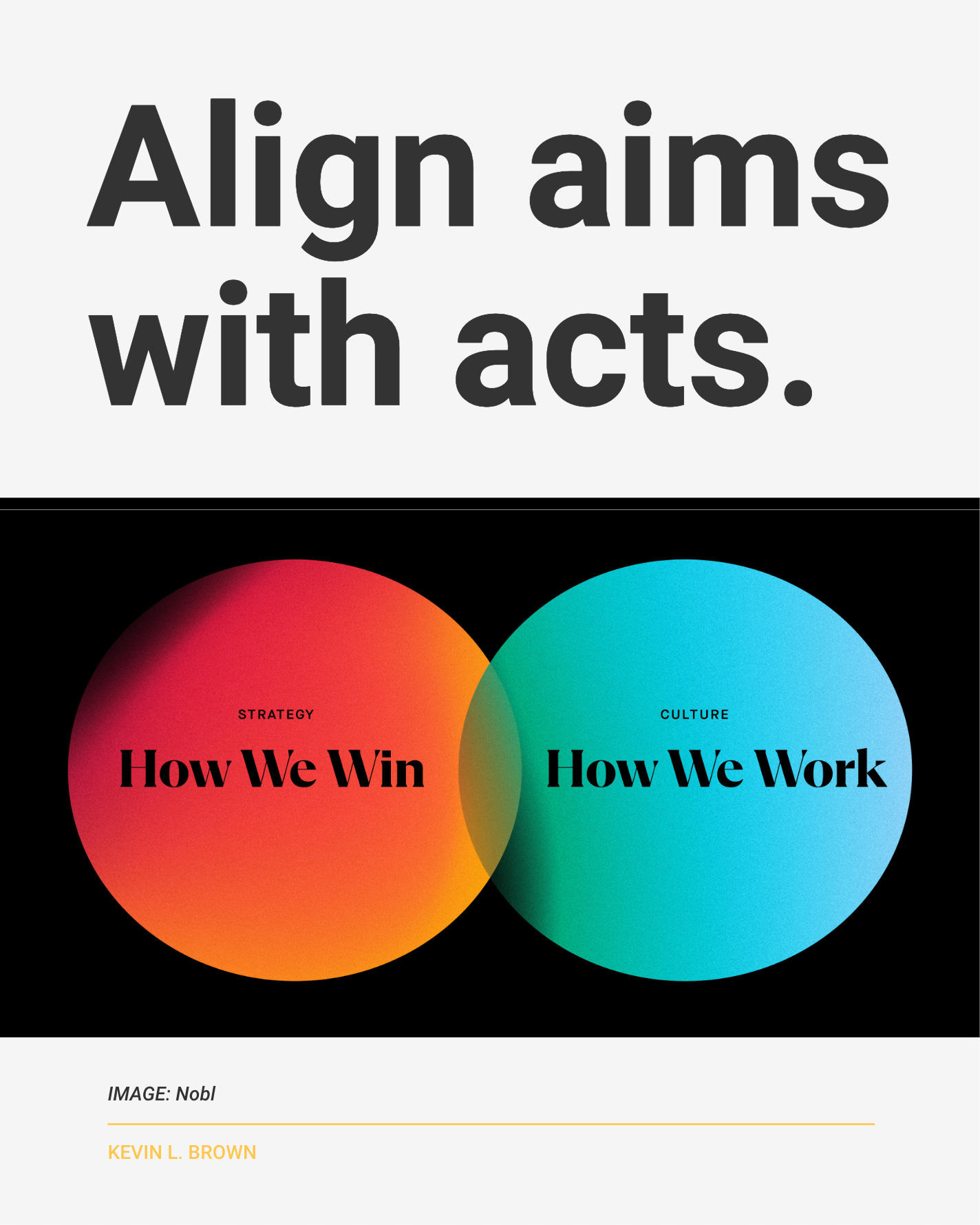Align aims with acts.
Your new year’s goals won’t make a difference.
Nor will your new 2024 annual plan.
Not without a fresh set of rhythms and routines.
Because real change comes from focusing on the intersection of:
📝 𝗛𝗼𝘄 𝗪𝗲 𝗪𝗶𝗻 (𝗦𝗧𝗥𝗔𝗧𝗘𝗚𝗬)
➕
👫🏽 𝗛𝗼𝘄 𝗪𝗲 𝗪𝗼𝗿𝗸 (𝗖𝗨𝗟𝗧𝗨𝗥𝗘)
But most nonprofit and foundation leaders spend much more time on setting their goals and plans. Then proudly telling the world about this strategy.
With much less time ensuring the internal team is rallied around it.
One prominent funder told us the most common reason they don’t invest is they don’t believe the nonprofit can pull off their claims. So why go through the strategy process without taking calculated steps to achieve it?
Look, I’m a brand expert — not an HR or culture pro.
However, 𝘳𝘩𝘺𝘵𝘩𝘮𝘴 is one of three sections in our strategic planning (alignment) formula.
𝗧𝗲𝗮𝗺 → 𝗣𝗿𝗶𝗼𝗿𝗶𝘁𝗶𝗲𝘀 → 𝗥𝗵𝘆𝘁𝗵𝗺𝘀
Because “goals without routines are wishes; routines without goals are aimless,” says the book Scaling Up.
And “the most successful business leaders have a clear vision and the disciplines (routines) to make it a reality.”
So here are three ways to immediately align your aims with acts.
𝗣𝗥𝗢𝗩𝗘𝗡 𝗣𝗥𝗢𝗖𝗘𝗦𝗦
For customers and funders, it’s not just good enough to have a clear ambition (theory of change). You must also have a proven process to deliver the day-in and day-out work on the ground.
This step helps you drive top-line funding. But more importantly, a proven process helps you drive bottom-line income and impact as well — due to creating internal efficiencies.
𝗜𝗡𝗧𝗘𝗥𝗡𝗔𝗟 𝗖𝗢𝗠𝗠𝗦
Communications isn’t just for the outside world — it’s for your team too.
There are countless digital tools for team chats, staff input, stakeholder feedback, and performance dashboards. But the key to great internal comms is largely this: consistently getting together as a team and passionately discussing what’s important.
Sounds boring, but internal comms hinges on meeting. And meeting well. The problem isn’t that meetings are terrible. It’s that we’re terrible at running them.
𝗟𝗘𝗔𝗗𝗜𝗡𝗚 & 𝗟𝗔𝗚𝗚𝗜𝗡𝗚 𝗞𝗣𝗜𝘀
A key performance indicator (KPI) is merely a way of measuring an organization’s progress towards the goals it is trying to achieve. There are two types of KPIs. You’ll want to use both.
Leading KPIs are input-oriented, activity metrics in a weekly scorecard that anticipate a company’s progress towards its goals. When done well, these are the closest thing your company has to a crystal ball.
Lagging KPIs are output-oriented measurements in a quarterly dashboard used to identify and quantify business performance. These generally measure what’s already happened.
The bottom line:
Goals guide.
Routines realize.
Plans need more than words.
💪🏽💛
The Daily Bonus
There’s a brand tactic you’ve likely never used.
But funders and teams crave it: the proven process.
So here’s how both doers and donors can create one. ⤵


